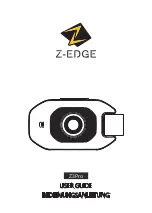
VC20XX Operating Manual
4
2 Basic Structure
The image is formed by a high-resolution progressive scan CCD sensor. One or two channels of video
output are digitized. An input lookup-table is available for basic pixel-preprocessing. The image is
stored in SDRAM memory using one of the 16 DMA channels (EDMA).
The video and graphics display on the monitor is performed in a very similar way: Data is stored in the
main SDRAM memory, either due to a previous video capture or to computing by the DSP. Graphics
data is then transferred to the graphics refresh buffer (SGRAM). This may happen periodically or on
demand. The SGRAM is read out at a fast refresh rate to provide a high-quality, flickerfree display.
A dual 3x256x8 output lookup-table gives you abundant choices for the appearance of images and
graphics.
The video capture and graphics output channels are completely independent. The storage area for
each may be chosen to be identical (necessary for live image display) or completely different. If the
latter is chosen, you may capture an image "in the background" while displaying a completely different
one.
The TMS320C6211 DSP is one of the fastest 32 DSPs. It features a RISC-like instruction set, up to 8
instructions can be executed in parallel, two L1 cache memories (4KBytes each) and a 64 KByte L2
cache on chip. Its high speed 16-channel DMA controller gives additional performance. The DSP uses
fast external SDRAM as main memory. A flash EPROM and a built-in multi-media card provide non-
volatile memory.
See
Appendix A: Blockdiagram VC20XX Smart Cameras
.
©
1996-2007 Vision Components GmbH Ettlingen, Germany
VC20XX_HW.pdf









































